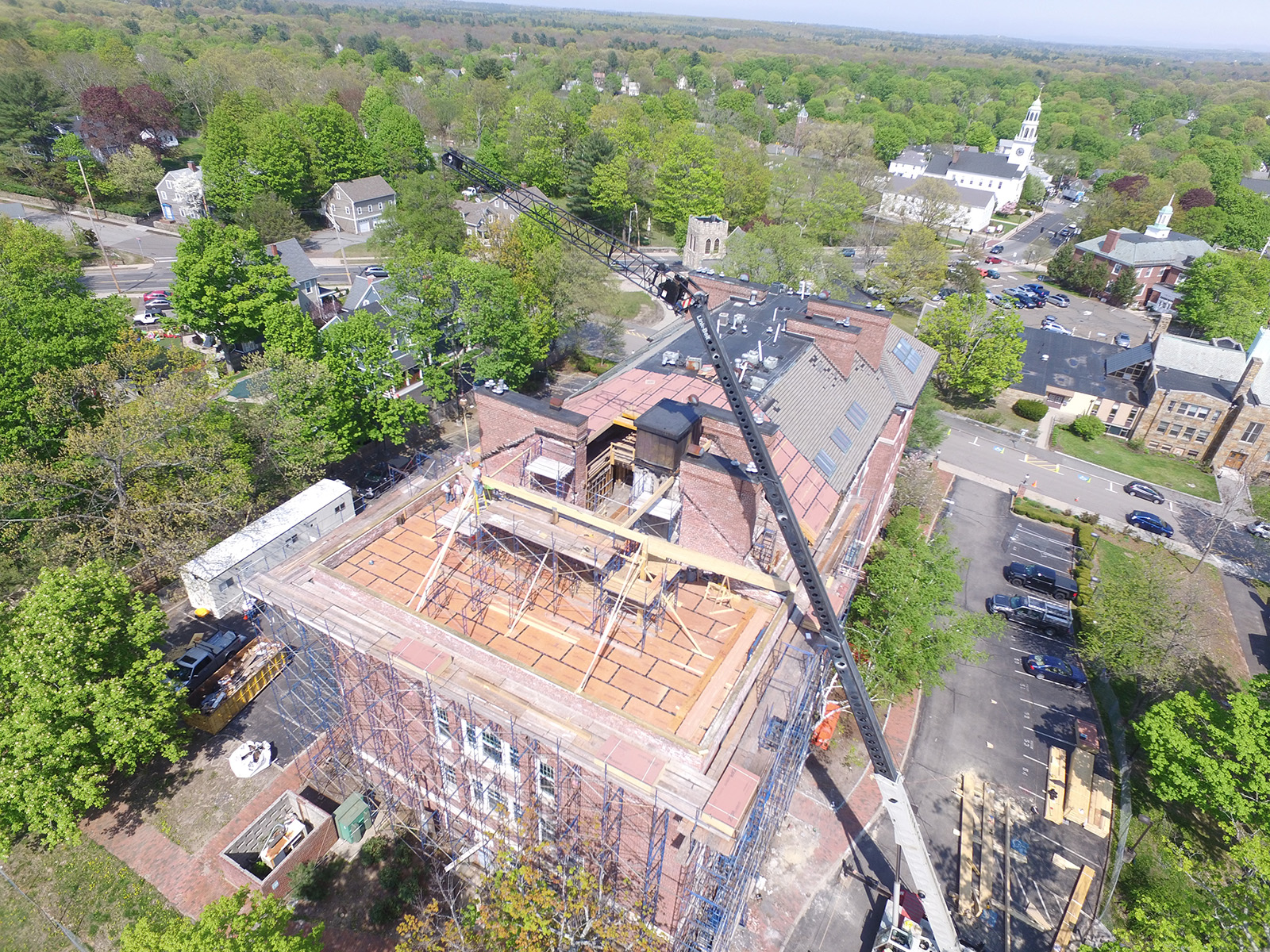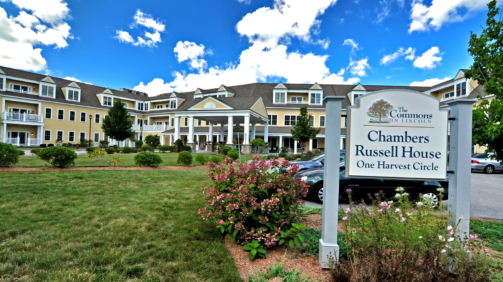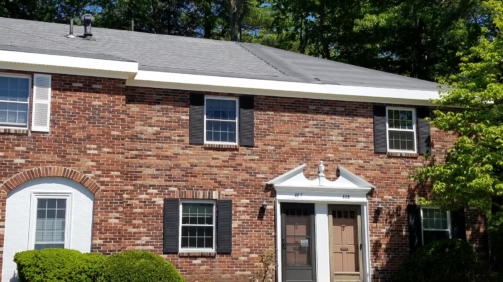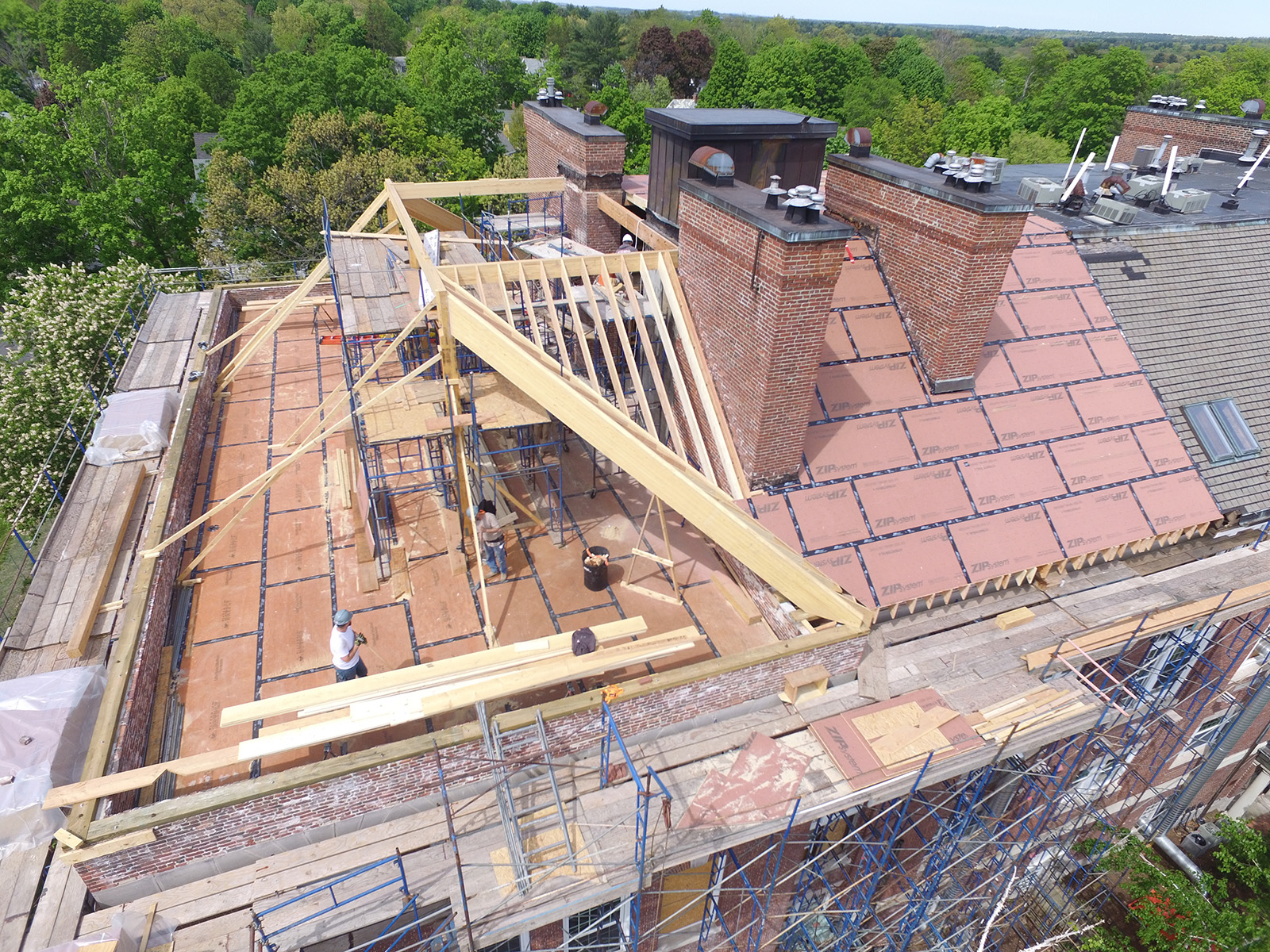
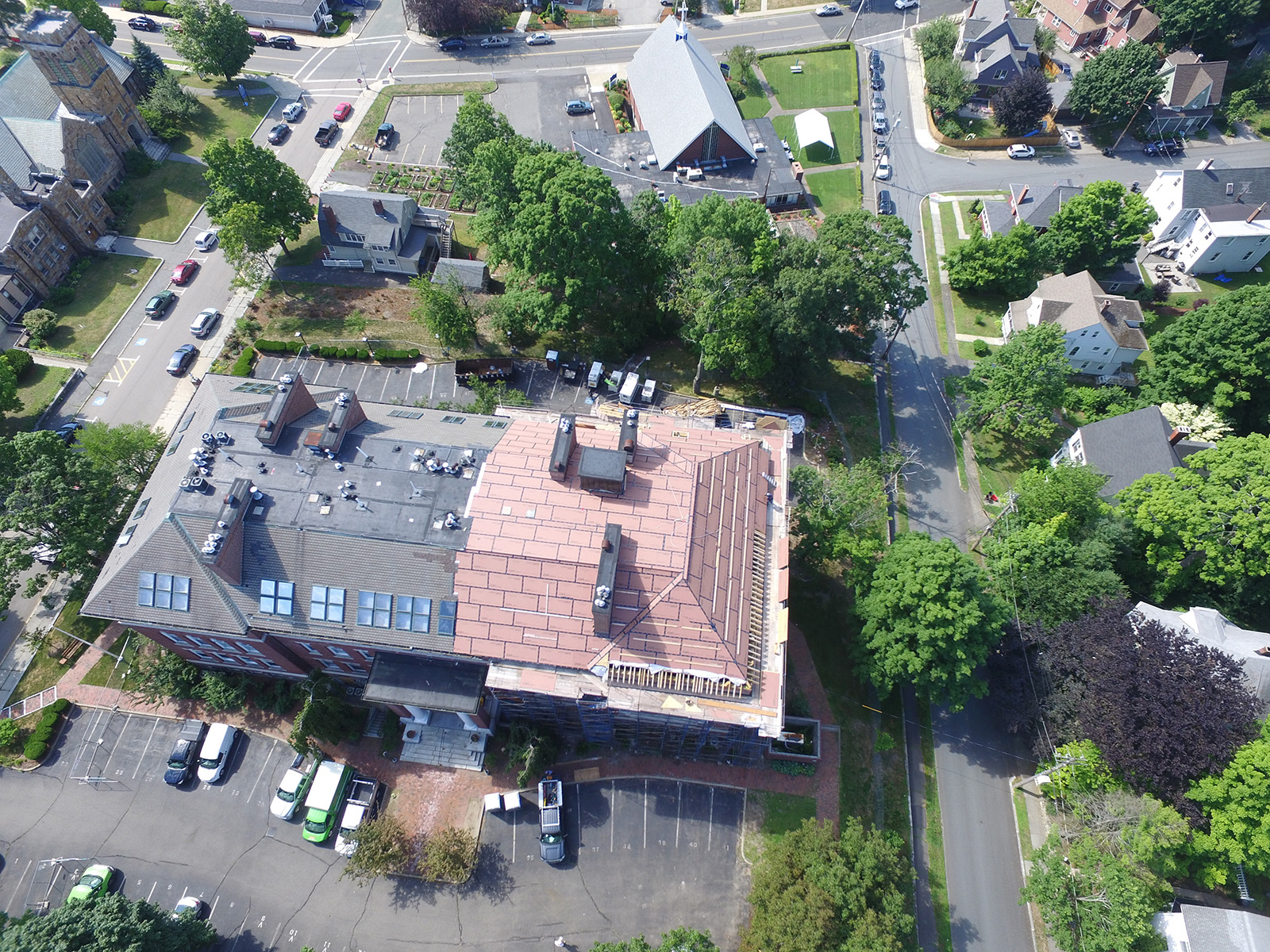
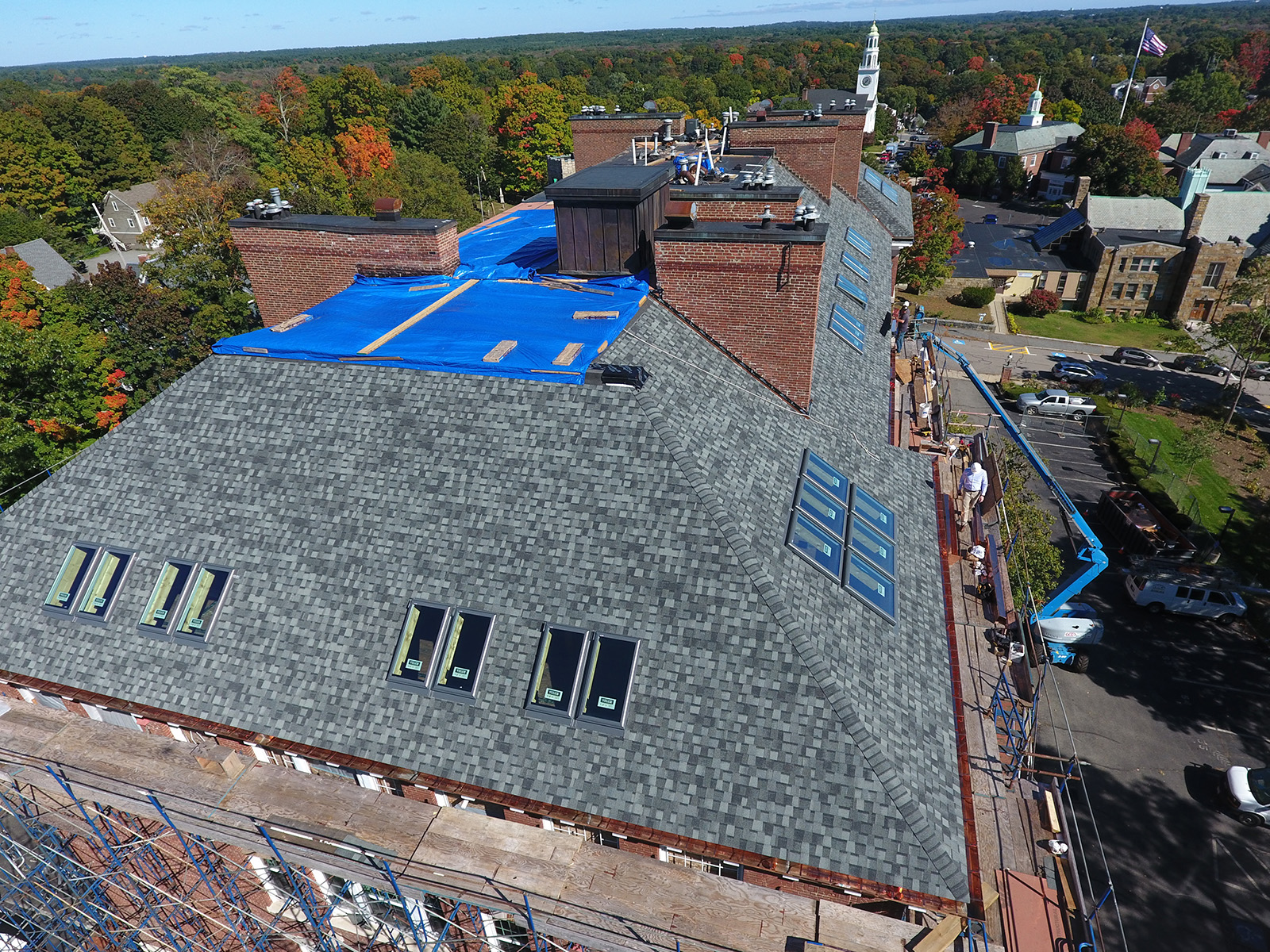

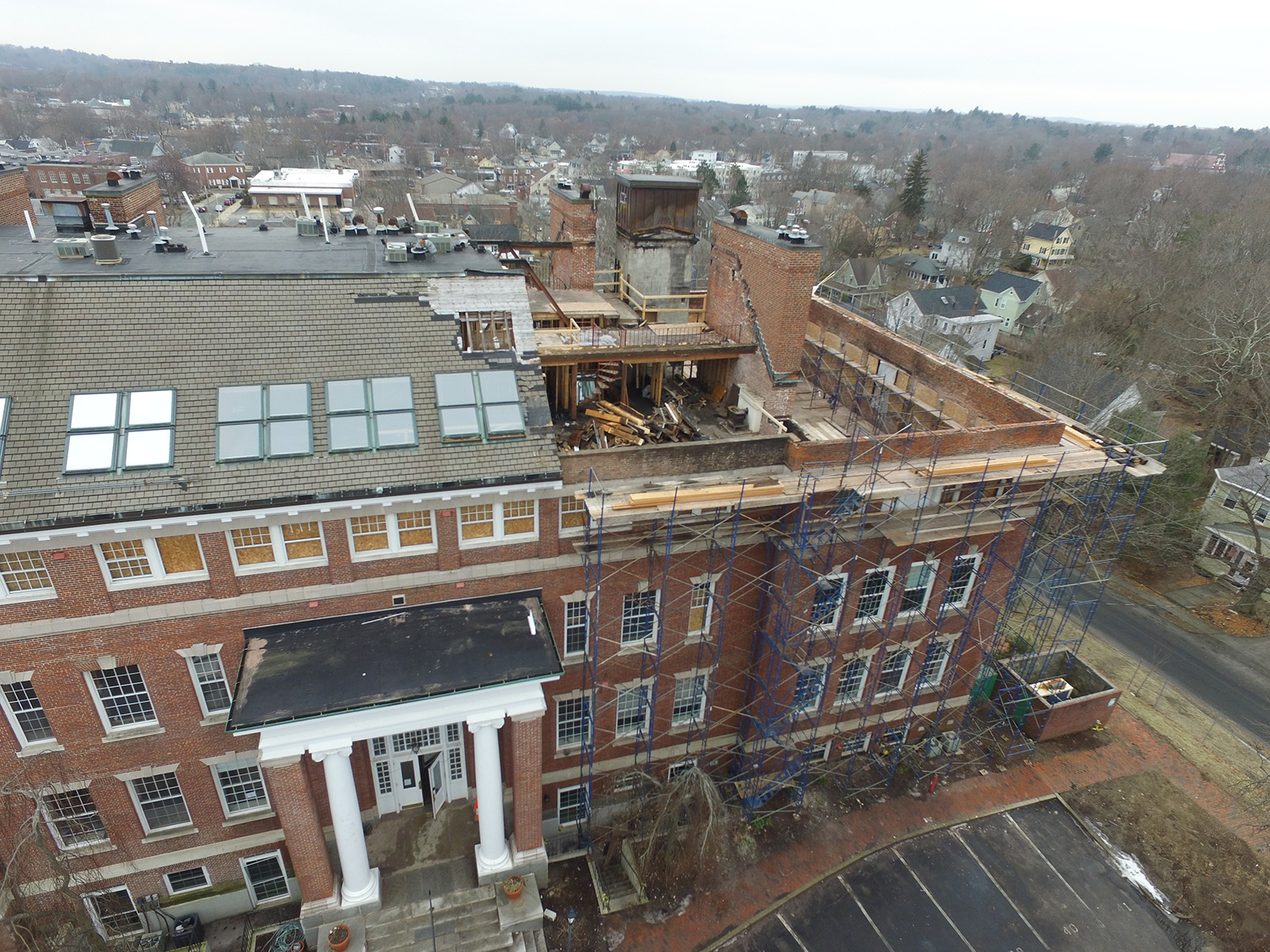
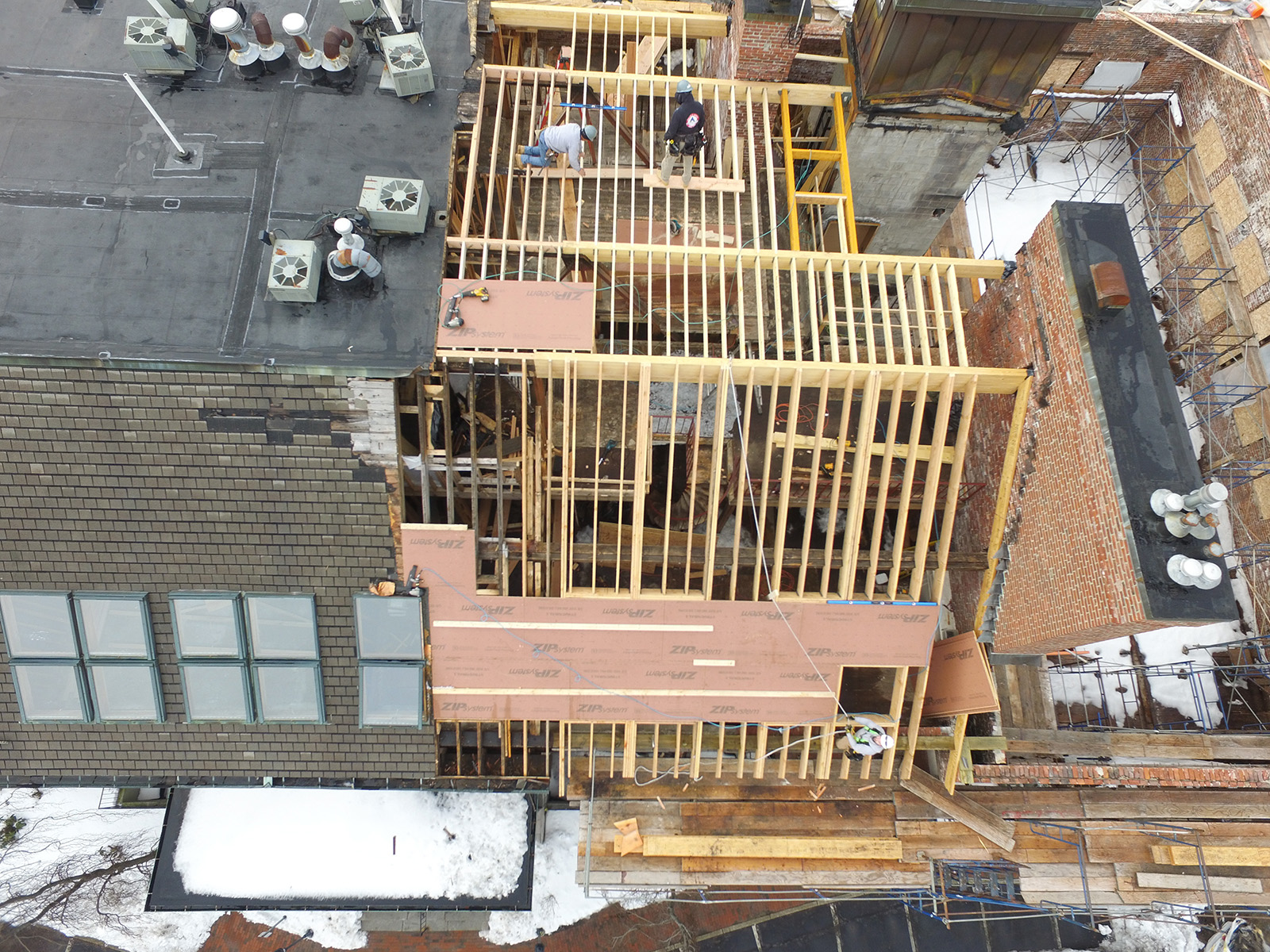
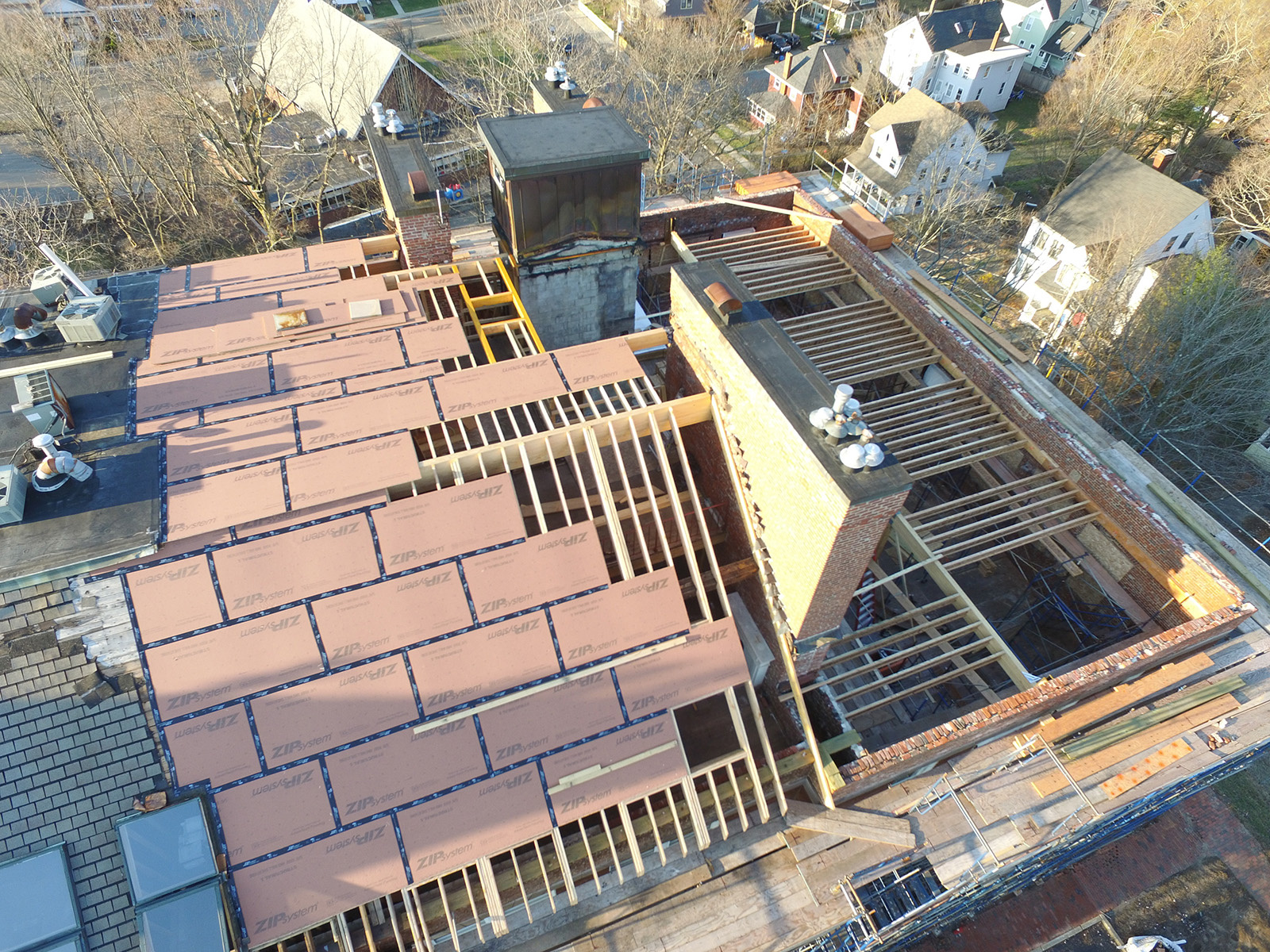
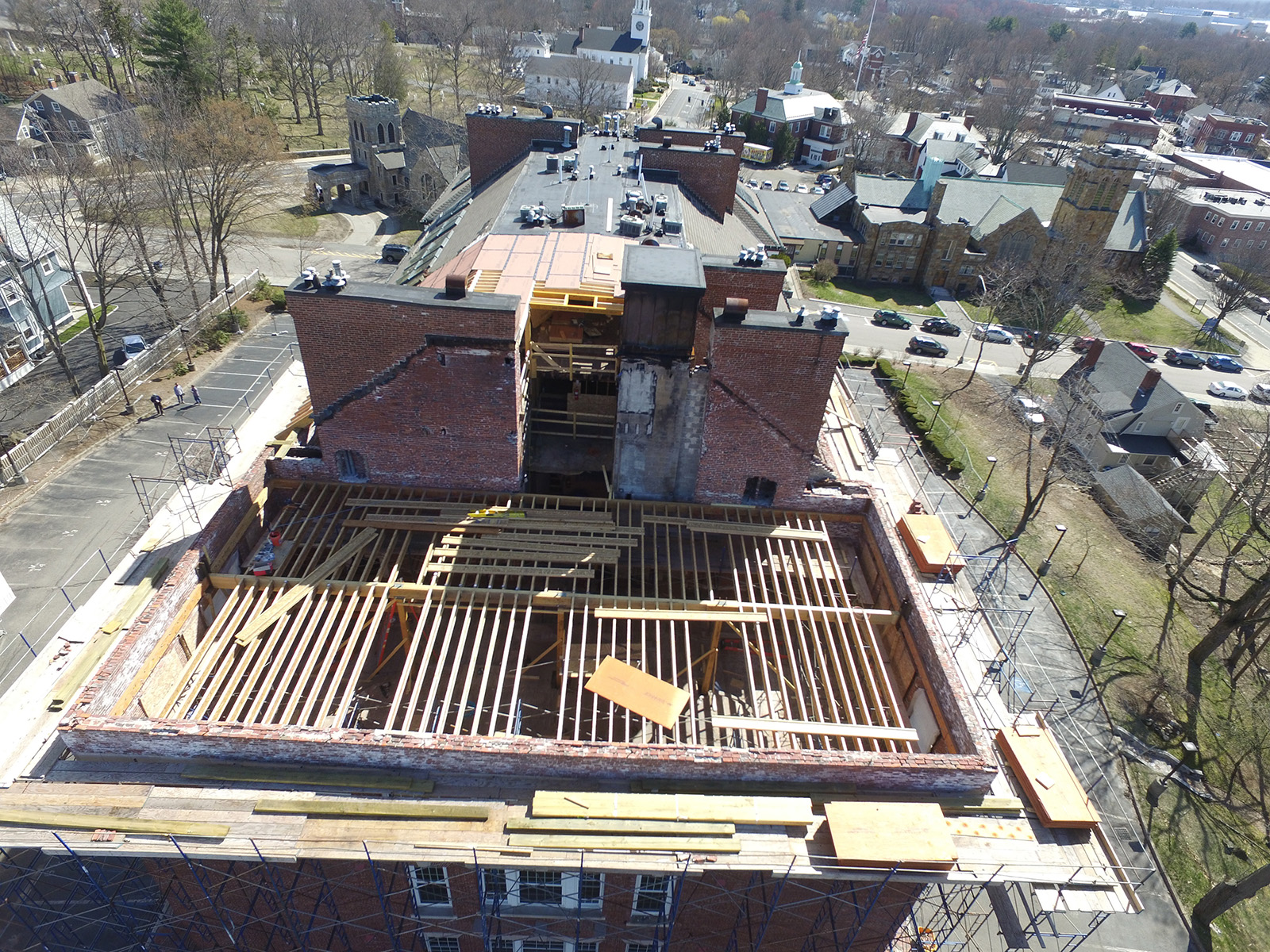
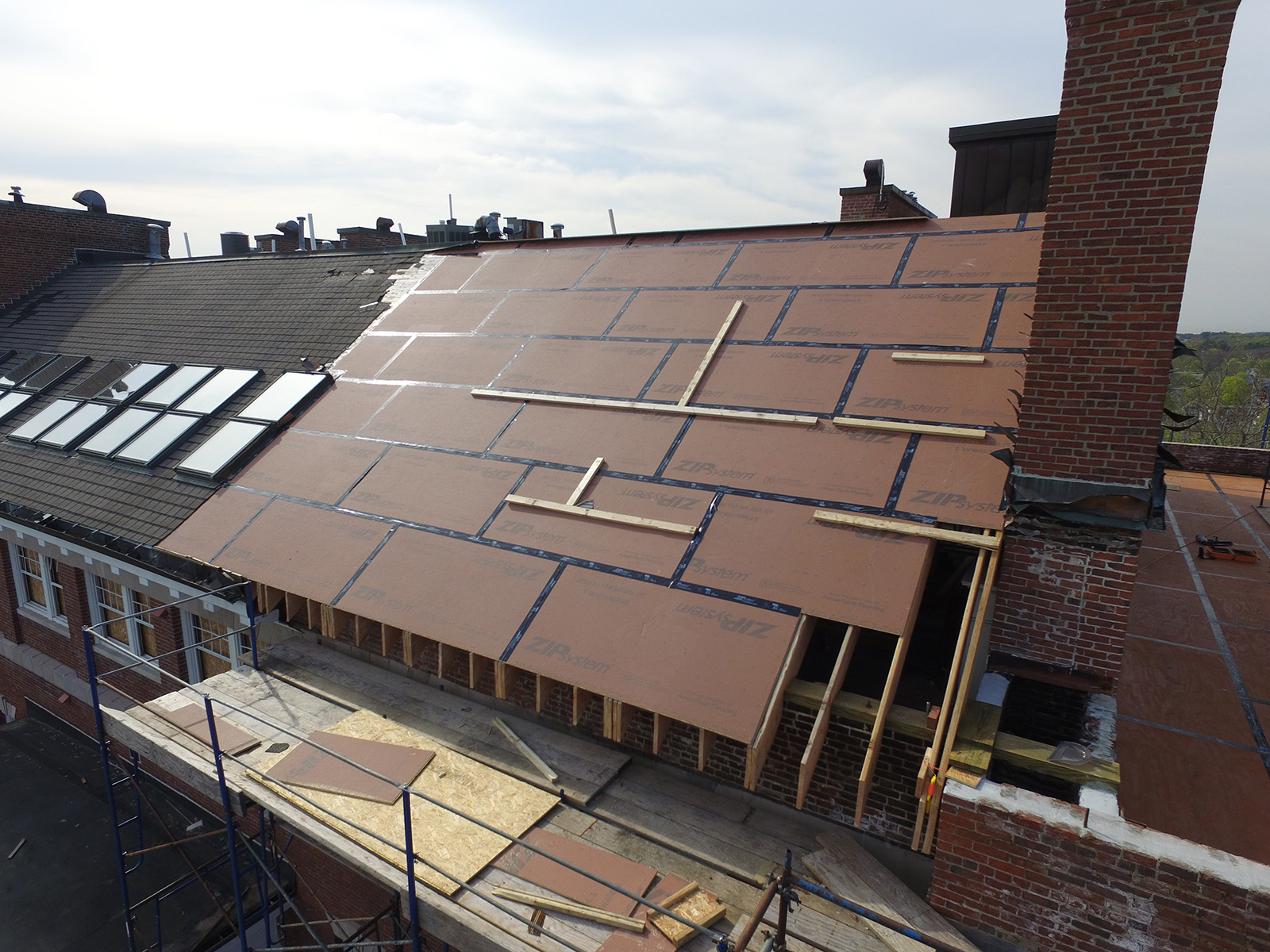

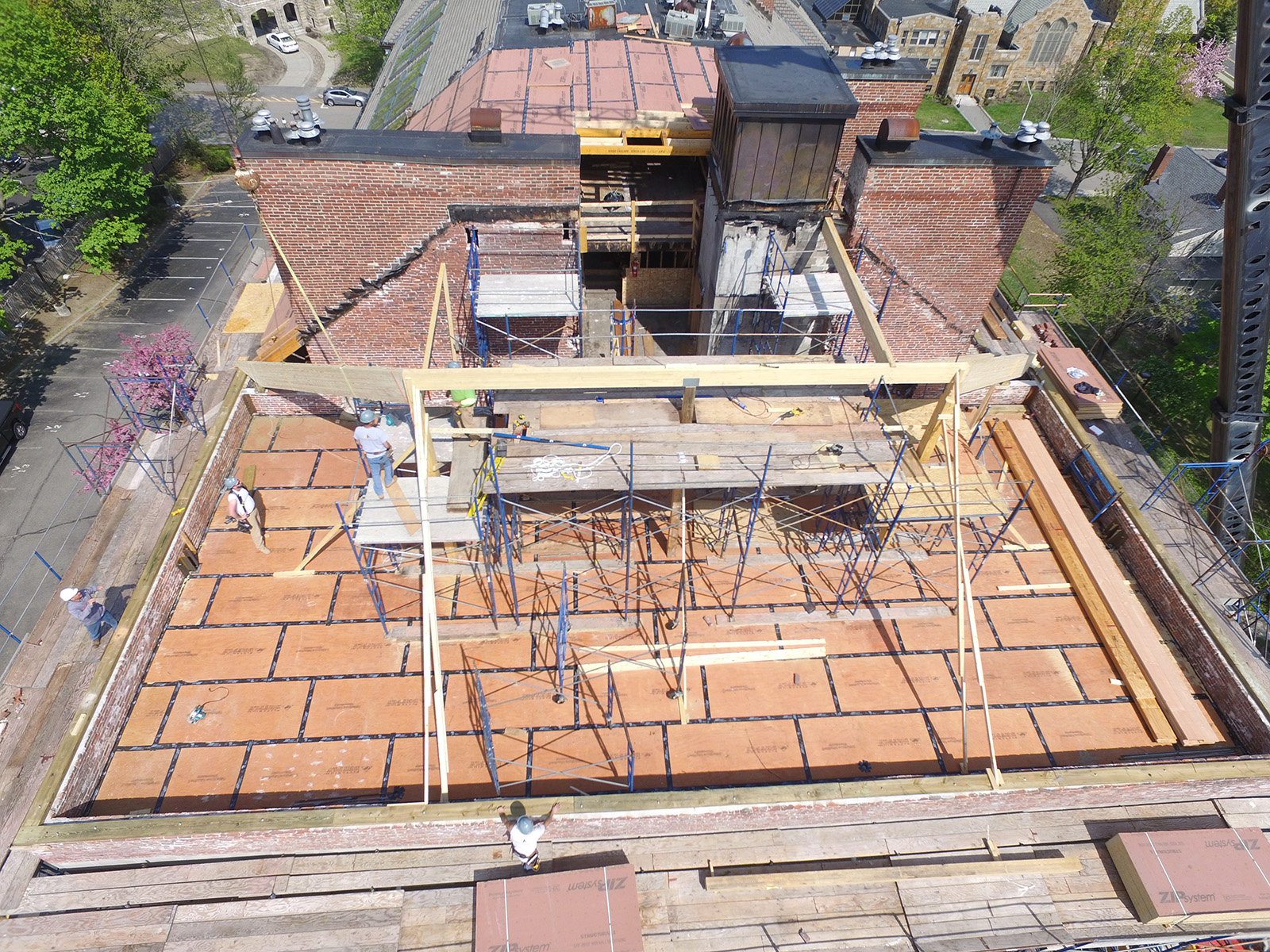
At a recent builders and Remodelers Association of Greater Boston(BRAGB)site tour, Scott Wolf, Managing Partner ofBRIGS, LLC, spoke candidly about the challenges involved with the reconstruction of the building, where there were still grooves in the stairs from years of use by students when the historic building had been a school. “We had to bring the building up to code while working within a structure built many, many decades ago,” Wolf commented.BRIGS chose Hopedale-based Landmark Associates as the general contractor for this unique and challenging project. Known for its remodeling and construction maintenance work for condominiums and assisted living facilities (including restoration contracting following fire and water damage), Landmark was excited to tackle this complicated project and help the displaced residents return to home as quickly as possible. When the investigation concluded in November 2017, Landmark’s first challenge was to close up the building before the winter elements could inflict further damage. The next phase of the project was construction and renovation. The project included not only the rebuild of the fire-damaged units but also a variety of other major renovation work, including:
- Rebuilding the entire roof, including skylights and most of the fourth floor which had collapsed onto the third. This was a significant challenge as the age of the building meant that all of the walls were out of level and rafters needed to be cut individually and double beams were needed to stabilize the structure.
- Stripping down all the other units to the stud walls due to mold and water damage.
- Redoing those walls within current building codes.
- Installing wiring, gas lines, fireplaces, a new sprinkler system, plumbing, and new windows. In fact, all of the HVAC systems had to be reconfigured based on new code regulations.

